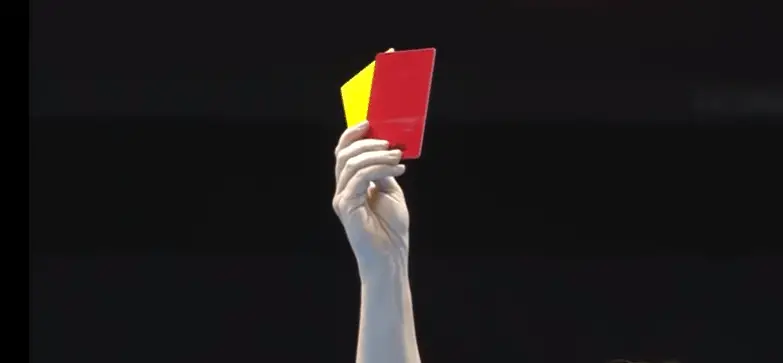Much like many other sports, table tennis also consists of laws which penalise players and officials for illegal play. Two of the ways those involved in table can be penalised is by the use of a yellow card or a red card by the umpire. More information on these two cards in table tennis can be found below.
Table of Content
When were the Yellow and Red Cards Introduced in Table Tennis?
The yellow and red card penalty was introduced for the first time in 1991. The Rule 3.05 in the ITTF Laws deals specifically with this topic.
What is the Use of a Yellow or a Red Card in Table Tennis?
Yellow or red cards in table tennis are used to penalise a player or a coach who has behaved in a manner which doesn’t abide by the rules of the sport in the competitions which use these regulations.
Essentially, if a table tennis competition has adopted regulations which allow for the use of the cards as a mechanism of penalty, then the umpires could use the same.
Also Read:
On What Grounds can a Yellow Card be Given?
Misbehaviour
Yellow cards can be issued for misbehaviour, which, at times, can become a subjective matter. Unlike football (soccer), table tennis doesn’t have a lot of incidents where the umpire has to officiate on such matters but when things do go out of hand with respect to the behaviour of players and officials, cards can be doled out.
A yellow card could be handed to the player or coach if his/her behaviour is deemed to affect the opposition or spectators. If a player or coach’s behaviour also is said to “bring the sport into disrepute” it could lead to a card.
Some of the examples of misbehaviour include but are not restricted to:
- Abusive language during the match against opponent, umpire or spectator
- Equipment abuse including breaking the ball deliberately or smashing it away in frustration
- Kicking the table
In such cases, a yellow card is immediately handed out to the player and if the issue repeats, the player concerned is given a one-point and a two-point penalty respectively for every subsequent problems. A red and yellow card will be held out against the offending player.
If these issues continue even after these three infractions, the umpire will suspend play and call for the match referee.
Illegal Coaching Advice
One of the reasons why yellow cards were given earlier was for coaching advice in the middle of games. That was against the laws of the game.
This regulation was revoked from October 2016 and players were allowed to receive coaching during games. However, it was still against regulations if:
- Coaching happened during a rally
- It broke the rhythm of play
If either of this was contravened, a coach could receive a yellow card and a further infraction could lead the coach getting sent off from the playing area.
Also Read:
If this infraction is repeated, the umpire will brandish a red card and send the coach away.
In a team game, this acts slightly differently. A yellow card, in case of any of the aforementioned misbehaviour, will lead be brandished but even if the second infraction comes from a different coach belonging to the same team, he/she would be given a red card and sent out of the playing area.
This coach cannot then be replaced by another during that match.
The rules regarding getting a yellow or red card are the same for a doubles match, where a team as a whole gets the card instead of just one player. However, in case of team game, the penalty isn’t applicable to the non-offending player in any latter matches during that team encounter.
How Does the Scoring Happen in Case of Yellow & Red Cards Doled Out?
If a player or a team commits a second offence, a yellow and red card is dished out and the team also faces a one-point penalty. This point is added to the opponent’s score. Similarly, after the third offence, two points are added to the opponent’s score.
If the penalty is awarded at the end of a game, the opponents start off with a 1-0 or 2-0 lead while if the match has ended, these penalty points are ignored.
This would work on similar lines in a doubles match as well but the scoring in case of penalties is different in case of a penalty in doubles for a team match.
Doubles Team Match Penalties Scoring
As mentioned earlier, penalties from an encounter in a team match are carried forward throughout that match.
In case of a doubles match where the two players could have received different warnings or penalties (cards), they start with the higher of the two penalties.
Let’s assume a doubles team consists of Player A and B.
Player A has had one yellow card to his name from a previous encounter in that team match, while the other Player B has had a yellow and red card dished out to him because of a second infraction.
As a result, as a team they will start with the latter penalty and a further infraction would lead to another yellow and red card and a loss of two points.
Straight Red Card in Table Tennis
Umpires aside, even a referee can dole out a single red card to a player or a coach in case of a serious misdemeanour as deemed by the referee. In such a case, the player or coach is disqualified from the match or the tournament depending on what the referee reckons.


